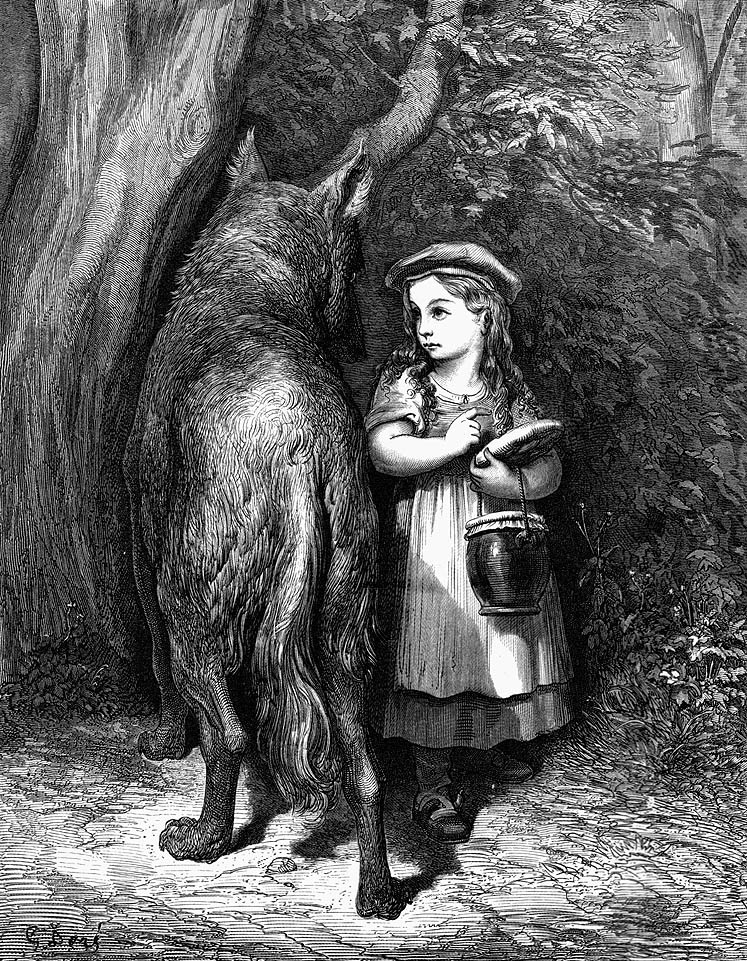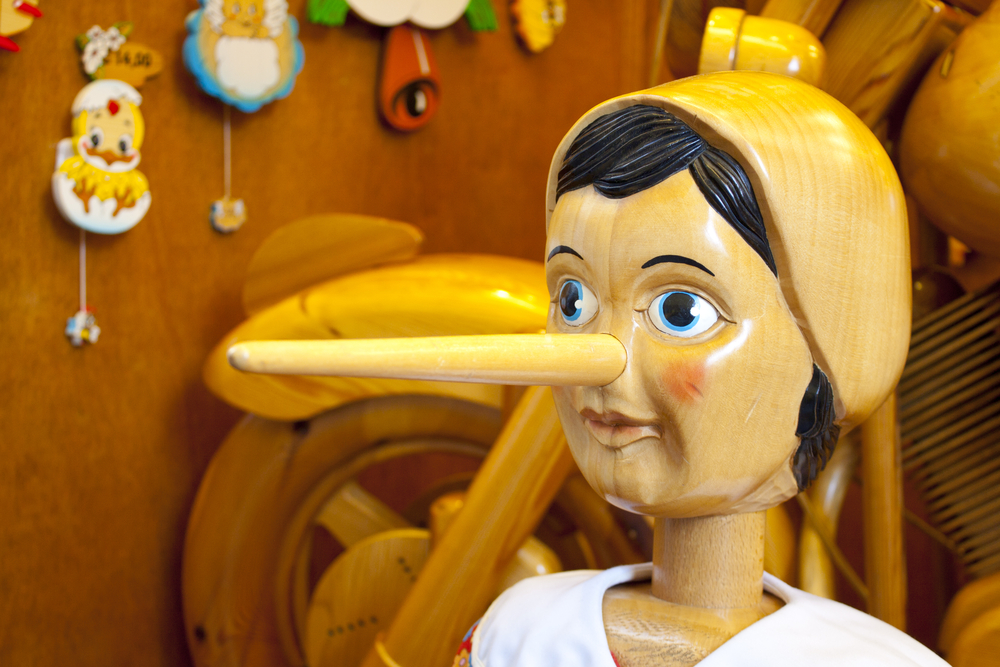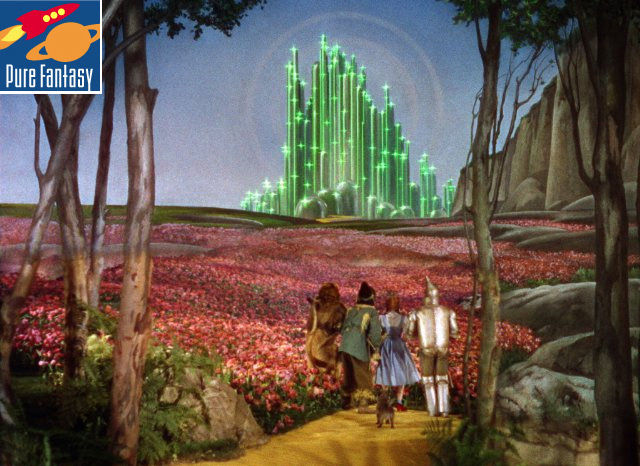5 Real-Life Examples of Fairy Tales Coming True
Truth to Tales

Stories of magic and monsters, handsome princes and damsels in distress — fairy tales capture the imaginations of children around the world, opening their minds to the wildest of possibilities. To grown-ups, however, most fairy tales seem too unrealistic to hold any grain of truth. But perhaps that shouldn't be the case.
Looking at fairy tales through the lens of science reveals some stories aren't as far-fetched as they initially appear to be. Here are five real-life examples of fairy tales coming true.
Little Red Riding Hood

The fairy-tale world sports several examples of werewolflike creatures, such as Beast from "Beauty and the Beast" or the wolf in some interpretations of "Little Red Riding Hood." But these fearsome wolf-men may have just been hapless victims of a striking medical condition.
Hypertrichosis, known colloquially as "werewolf syndrome," is defined by an excessive amount of hair, either all over the body or just in certain areas. Sometimes a person is born hairy because a rare genetic mutation; other times, a person acquires hypertrichosis later in life as a side effect of certain drugs and chemicals, or even some cancers. [Thai Girl Sets World's Hairiest Child Record]
The first reported case of werewolf syndrome dates back to the 1600s — Petrus Gonzales of the Canary Islands, along with his two daughters, son and grandchild, had the condition. And in the 19th century, people with hypertrichosis, such as Jo-Jo the Dog-Faced Boy, Lionel the Lion-Faced Man and the bearded lady, became staples of sideshow circuses to be gawked at rather than feared. [10 Mythical Beasts That Might Really Exist]
Pinocchio

Originally carved from wood, Pinocchio became a real boy with the help of magic. In ABC's fairy-tale drama "Once Upon a Time," we see the opposite happen: Pinocchio, now a grown man in the magic-free real world, begins turning back into wood.
This occurrence, of course, is nonsense — that is, unless Pinocchio had Epidermodysplasia verruciformis, a rare genetic skin disorder marked by a high risk of skin carcinoma. The immune deficiency can leave people highly susceptible to various types of the human papillomavirus, including ones that cause tough, barklike warts.
In 2008, Indonesia's Dede Koswara stunned the world with the barklike growths that sprouted from his hands and feet. His affliction, doctors determined, was caused by a combination of epidermodysplasia verruciformis and the HPV-2 virus. The virus hijacked Koswara's skin cells, causing them to produce an elevated amount of keratin, the fibrous protein responsible for hair, hoofs and horns. With Koswara's weakened immune system, the keratin warts grew out of control, forming the dense, gnarled growths that earned him the moniker, "Treeman."
Snow White

In "Snow White," the princess bites an apple and falls into a deathlike coma, only to be awoken by true love's kiss (in later versions of the tale). There is a simple explanation for Snow White's slumber: bacteria.
Listeria monocytogenesis a rod-shape bacterium that resides in a variety of food, including apples. "It causes meningitis and often enough confusion and stupor to the point of coma," Dr. George Thompson, an assistant professor of medicine at the University of California, Davis, told LiveScience in an email.
It might, however, take a little more than a kiss to awaken someone from a meningitis-induced coma, unless that kiss is somehow imbued with a hefty dose of antibiotics.
But perhaps true love's kiss really can do the trick. In 2009, a woman in England suffered a heart attack and fell into a coma. She began to stir two weeks later only when her husband pleaded her for a kiss— she apparently obliged by turning her head and puckering up, according to the Daily Mail. [The Truths Behind 10 Old Wives Tales]
Wizard of Oz

The Wicked Witch of the West is a powerful sorceress in the Wizard of Oz stories, who has one odd and fatal weakness: water, which causes her body to melt. It's difficult to imagine water having that effect on any flesh-and-blood person, but that's not to say H2O is always benign. Just ask someone afflicted with Aquagenic urticaria.
Aquagenic urticaria is a rare disorder that causes the skin to break out in itchy and painful white or red hives a few minutes after direct contact with water of any temperature (in some cases, this can include a person's own sweat and tears). According to a study published last year in the journal Annals of Dermatology, fewer than 100 cases of aquagenic urticaria have been recorded in the scientific literature since the condition was first described in 1964.
If the Wicked Witch has Aquagenic urticaria, tossing water on her wouldn't kill her, but the sudden pain and shock may be enough to elicit her well-known cry: "I'm melting! Melting! Oh, what a world! What a world!"
The Magic Mirror

The Magic Mirror boasts remarkable abilities, which vary depending on the tale. In "Snow White," the mirror is a purveyor of knowledge, answering any question as truthfully as possible (though the only question the vain Queen cares to asks is, "Who is the fairest one of them all?"). In "The Magic Mirror" by Aleksandr Afanas'ev, the Russian counterpart to the Brothers Grimm, the enchanted item had a similar ability and could also show you real-time images of any place you wished.
Technology has given us our own little magic mirror: Siri, the iPhone's souped-up personal assistant. If asked, Siri, which draws its knowledge by accessing the Internet, will tell you who's the fairest of them all (you, in most cases), show you images of places, people or things, or try to answer any other question you pose.
Some developers are now trying to turn large mirrors into information hubs. The New York Times R&D Lab, for example, is working on a "magic mirror" reflective screen that allows you to browse NYT's news articles and videos, as well as schedule events in your personal calendar, shop online and exchange messages with other magic mirrors in your household.
Get the world’s most fascinating discoveries delivered straight to your inbox.

